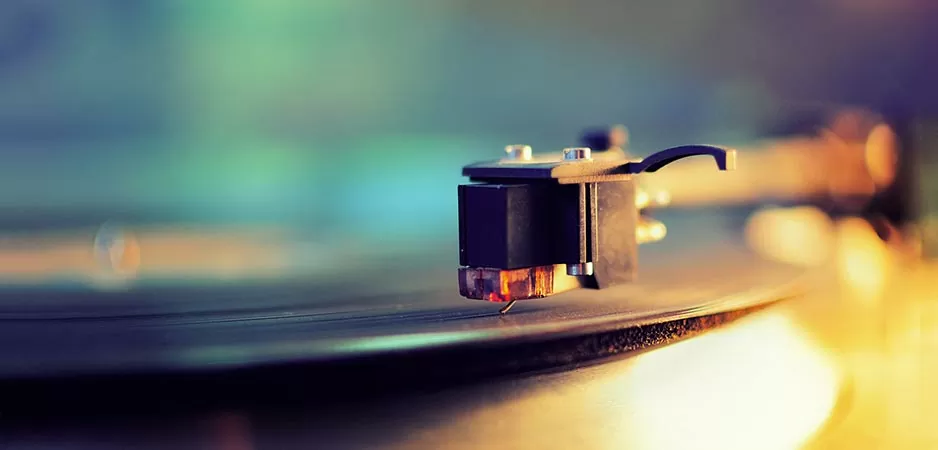Vinyl vs. Digital Audio: The Pros & Cons
Vinyl vs. Digital audio sits firmly among that contemporary canon of binary debates, alongside perennial classics like iOS vs. Android, Console vs. PC Gaming, E-Books vs. Physical Books, and Mac vs. PC.
With both camps often fully entrenched in their position let’s take a step back and objectively look at the advantages and disadvantages of both formats.
Vinyl explained.
Playing vinyl involves a small needle tracking in the grooves of a record. The groove’s physical variations are translated into electrical signals, producing sound when amplified.
The LP or Long-playing vinyl record as we know it made its first appearance in 1948. It was developed by Columbia Records and would soon go on to replace the 78 RPM shellac gramophone discs. This new format allowed for vastly improved playing times of up to 23 minutes per side. Vinyl Records come in the following dimensions – 12″,10″ and 7″. As a rule 12-inch diameter records represent the Album format of choice while singles favour the 7″ size. Later, however, In the mid-1970s, Disco DJs would inspire a move towards 12″ singles. This was largely due to the louder dynamic range and longer track length available at 12 inches.
The processes that go into the manufacturing of vinyl records are quite elaborate. Firstly the finished recording must be mastered for the vinyl format and cut into a lacquer-coated aluminum disc using a lathe. This process creates the master recording with grooves that represent the audio. This master is then electroplated to create a metal stamper, which is used to press vinyl pellets into the familiar disc shape.
The manufacturing process is therefore relatively slow. According to Disc Makers CEO Tony Van Veen, one hour of production yields only about 70-80 records. This goes some way to explaining the high cost of vinyl records.
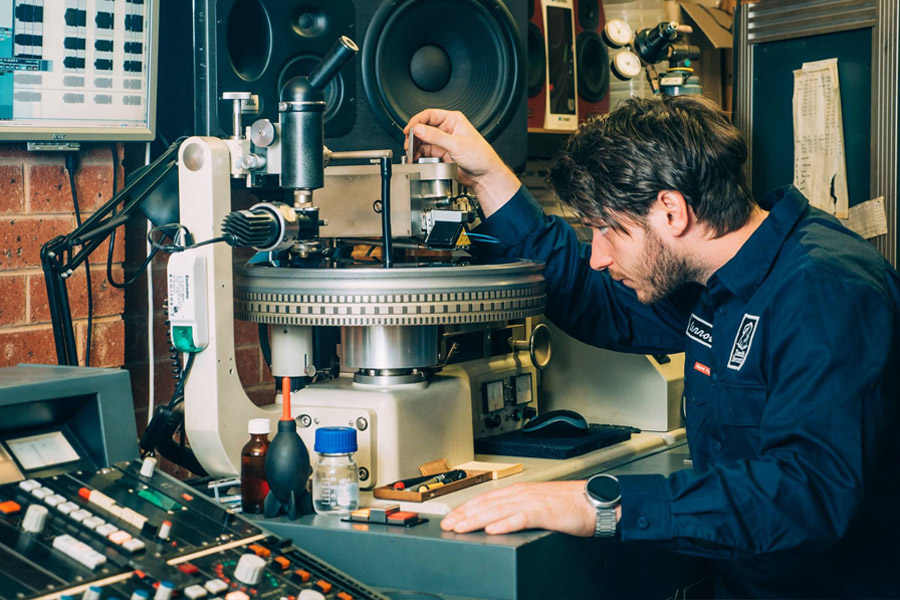
Digital Down-low
Like much digital information, digital audio is merely a series of 0s and 1s. The audio represented by a soundwave is typically encoded as numerical samples in a continuous sequence. These values are then read and translated back into an audio waveform using some form of digital-to-analogue converter.
Digital audio was first introduced via the Compact Disc format. Co-developed by Philips and Sony CDs as they became commonly known, were designed to store and play digital audio recordings. The first CDs were released In Japan in October 1982.
CDs work by encoding audio or data as a series of microscopic pits and lands on the disc’s reflective surface. A laser in the CD player reads these patterns as it reflects off the disc, converting them back into audio signals for playback.
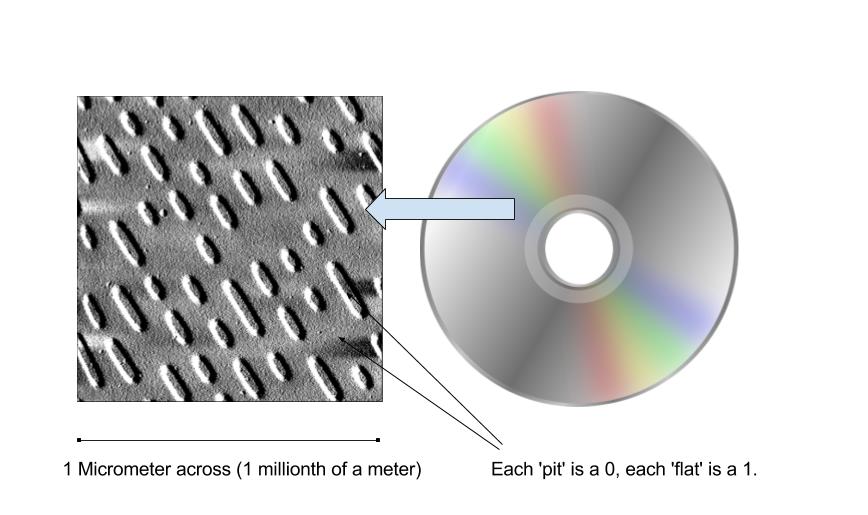
Digital audio is now more commonly associated with streaming. Streaming delivers music or content over the internet in real-time, transmitting data packets that are decoded and played instantly on a user’s device. Digital streaming offers a range of audio quality levels, often expressed in terms of bit rate and compression. These range from large-sized, high-quality lossless formats such as FLAC and WAV to smaller compressed formats such as MP3 and AAC.
Vinyl vs. Digital audio – Sound Quality Comparison
So now we know how each format works it’s time to cut to the chase and compare the sound quality of Vinyl vs. Digital audio. As sound is such a subjective medium it’s worth noting that everyone will have their own individual opinions as to what represents great sound. The sort of music that you’re reproducing will also have a bearing on how sound is perceived by a listener. All this aside, there are some objective aspects that can be examined as detailed below.
Frequency response
Frequency response represents the capacity of a component to faithfully reproduce a wide range of frequencies.
On paper digital audio appears to be the clear winner as it offers full-frequency reproduction of sound, well beyond the scope of human hearing. Digital audio is famously clear and detailed, especially in the high-frequency range.
Digital audio can however come unstuck due to a little thing called aliasing. Aliasing in digital audio can have a detrimental effect on the sound by introducing unwanted artefacts and distortion. It occurs when the sampling rate of a digital audio system is insufficient to accurately capture high-frequency components of the analogue signal being converted to digital. high frequencies “fold back” into the audible range, creating false lower-frequency components that weren’t present in the original analogue signal.
On the other hand, vinyl is capable of accurately reproducing a wide range of frequencies, typically spanning from 20 Hz to 20 kHz, which covers the entire audible spectrum.
Vinyl is often associated with a warmer, more colourful sound due to its inherent imperfections and the nature of its playback equipment. High-frequency performance on vinyl may however exhibit limitations, resulting in reduced clarity and detail in the upper frequency range.
Dynamics
In music, we use the word dynamics to describe the volume of music. More specifically dynamics represent the difference between the quietest and loudest parts of a track. Dynamics play a crucial role in music as they can convey emotion, energy, and impact in a musical composition or a recorded performance.
Due to the limitations of a needle tracking in the groove of a record, there’s a limit to how loud a vinyl record can be pressed. Vinyl has a dynamic range of 55-70dB depending on the length of the side. Digital music on the other hand can go up to 90-96dB. Digital audio can also reproduce very low-level sound due to its lack of underlying distortion.
So on paper, it would appear digital is the clear winner here. Well, that would have been the case if it weren’t for the so-called loudness wars. The loudness war refers to a trend in music production where songs are excessively compressed and limited to achieve maximum volume. This practice aims to make tracks sound louder in competition with others but in turn, sacrifices the dynamic range and audio quality.
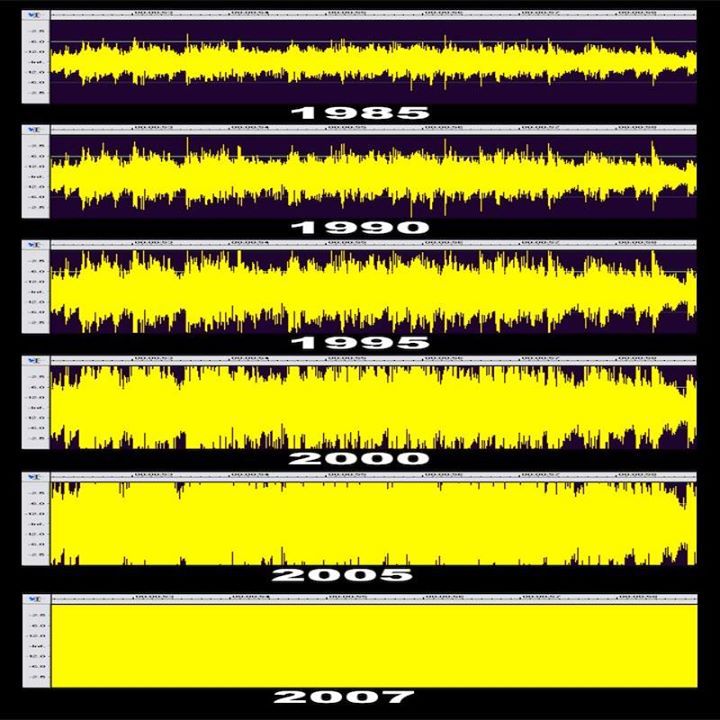
Because of Vinyl’s inherent volume limitations, this format has been largely immune to the effects of the loudness war. Therefore records that are mastered for vinyl tend to have more dynamics. This may explain why some people feel music played on vinyl has more life and soul.
Durability and associated problems
One of the major differences between vinyl and digital lies in the format’s durability. Mention the sound of vinyl to most people and the first thing they will think of is the iconic sound of snap, crackle and pop. However well you treat a record it’s always going to be susceptible to surface contamination and wear. Dust particles as well as other nasties such as grease, and mould spores, not to mention the dreaded surface scratch can add unwelcome noise, particularly to quieter sections of music. And that’s before we take into account the mechanical interferences inherent in reproducing music on a turntable.
Rumble is an effect caused by noise generated by turntable bearings. This can influence the playback of low frequencies. Slightly warped or defective records can also produce Wow and flutter effects. This effect is characterized by pitch and timing fluctuations.
Digital audio on the other hand is not affected in the same way from surface contamination or wear. (Unless of course, you’re referring to a damaged CD.) Certain file formats can suffer however from something called quantisation noise. This is the audible result of lossy compression. Lossy compression is a data compression technique used in digital media to reduce file sizes by permanently removing some of the data, resulting in a loss of quality when compared to the original uncompressed file. High-quality Lossless audio files will not lose any quality making these the clear winner when it comes to noise and audible artifacts.
Equipment is key!
So far we have not considered what is probably the biggest influence over the sound of Vinyl vs. Digital audio. That of the equipment that you intend to play your music on. The turntables and associated phono pre-amps required to play vinyl records vary astronomically in price and quality. From a £30 Crosley turntable to a £460,000 AV Designhaus Derenville VPM 2010-1.
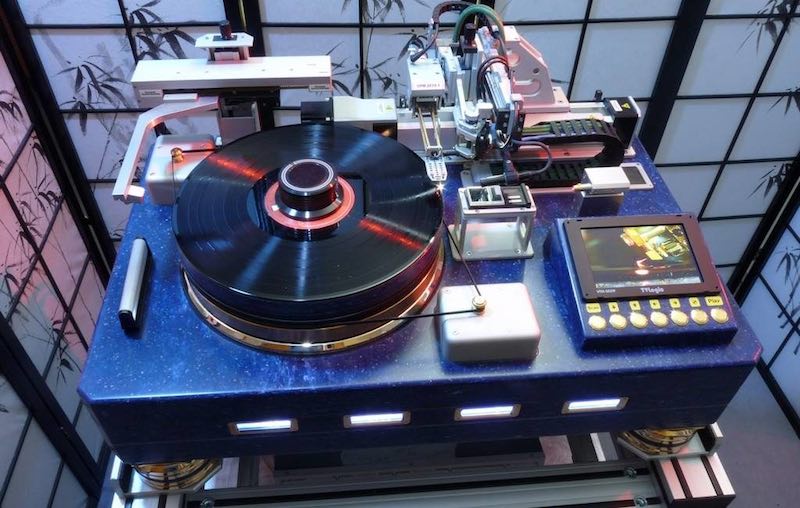
Be warned though. A budget turntable is never going to produce a high-quality sound and worst scenario, could even damage your records! I’m going to go out on a limb here and say that unless you’re willing to invest in a moderately priced (£150 plus) turntable with adequate phono amplification then you might as well keep it digital. But if you are willing to invest in a nice set up then vinyl should hold up well compared to digital.
Main advantages: Vinyl
One commonly circulated trope regarding the ‘vinyl sound’ ‘is that it’s considerably warmer than its digital counterpart. This may have more to do with the limitations and subtle distortions that vinyl produces. Putting sound aside though, there are many other factors that work in vinyl’s favour.
- Listening to records is more of an immersive physical experience. The nostalgic feeling that you get placing a record on the platter and dropping the needle simply cannot be replicated by streaming.
- Records have the cool factor! The record sleeve for instance, with all the additional detail they provide, can be appreciated more fully than a digital thumbnail. Having an interesting record collection can be seen as a badge of honour or status symbol to some. Especially in this era of social media.
- Collecting records in itself can be a highly enjoyable pursuit. Although a great deal of music is available. digitally, there are still countless vinyl discoveries that can be made that are nowhere to be seen online.
- Records have an intrinsic value. Although buying records, particularly new records, can be an expensive business, many records can appreciate in value over time.
- When you buy a vinyl record, you own a physical copy of the music. This gives you more control over your music collection compared to streaming. Unlike streaming, You can pass on your records to future generations.
- Vinyl records have a rich history and are associated with the evolution of music technology, making them a tangible connection to music’s past.
Main advantages: Digital
So we’ve compared the sonic differences between Vinyl and digital audio. Some people will prefer the analogue, slightly distorted, nature of the vinyl sound whilst others would rather the clarity and detail that high-quality digital can provide.
But sound is just one of many aspects to consider when pitting Vinyl against digital. Let’s look at some other main advantages digital audio has to offer.
- It’s impossible to argue that digital music isn’t more convenient. Digital audio files are easily stored on various devices, allowing you to carry your entire music library in your pocket
- Digital platforms provide access to a vast and diverse catalogue of music from all over the world, offering endless choices and genres to explore.
- Streaming services and search engines provide algorithms that suggest new music to discover. These suggestions are personalised, based on your previous listening habits and musical tastes.
- You can quickly search for and find specific songs in your collection. You can organize your collection in playlists and set to shuffle tracks, making for an effortless and varied listening experience.
- Digital audio easily integrates with modern technology, including smartphones, tablets, smart speakers, and car audio systems, providing seamless connectivity.
- Unlike large vinyl collections, digital audio eliminates the need for physical storage space. This point is particularly pertinent if you ever need to move house!
- Unlike vinyl records that require a high level of care and maintenance, digital audio does not degrade over time.
Vinyl vs. digital audio: Summary

I think it’s safe to say there’s no outright winner when it comes to the Vinyl vs. Digital audio debate. Yes, Digital is far more convenient but on the other hand vinyl offers a more immersive experience. It all comes down to what sort of listening experience you are looking for.
And of course, this is not a binary choice. For many the perfect solution is to enjoy both formats for what they offer. And if vinyl sales figures are anything to go by more and more music fans are choosing to dip their toes into the immersive world of vinyl. In fact, in 2022 Vinyl sales overtook CD sales for the first time since 1987. Data Company Luminate recently reported that the half-yearly sales figures for vinyl in 2023 showed a massive 21.3% growth rate.
Could it be that the endless musical possibilities provided by streaming services is the very thing that’s fueling this vinyl resurgence? With so much immediate choice comes a perceived devaluing of music itself. Music becomes a disposable commodity that appears to hold very little intrinsic value.
The joy of record shopping. The act of holding and admiring the physical record sleeve. Taking the time to read the liner notes. Smelling that unmistakable new vinyl smell. These all play into the appeal of vinyl and why I believe the Long Playing vinyl record is here to stay.
Side note – Despite popular opinion, there’s no such thing as vinyls in relation to multiple vinyl records. The dictionary says the plural of “vinyl” is “vinyl.”
Remember – RouteNote Create subscriptions start from as little as $2.99. You also get 10 FREE credits to spend on samples along with access to our FREE sample pack bundle when you sign-up!
